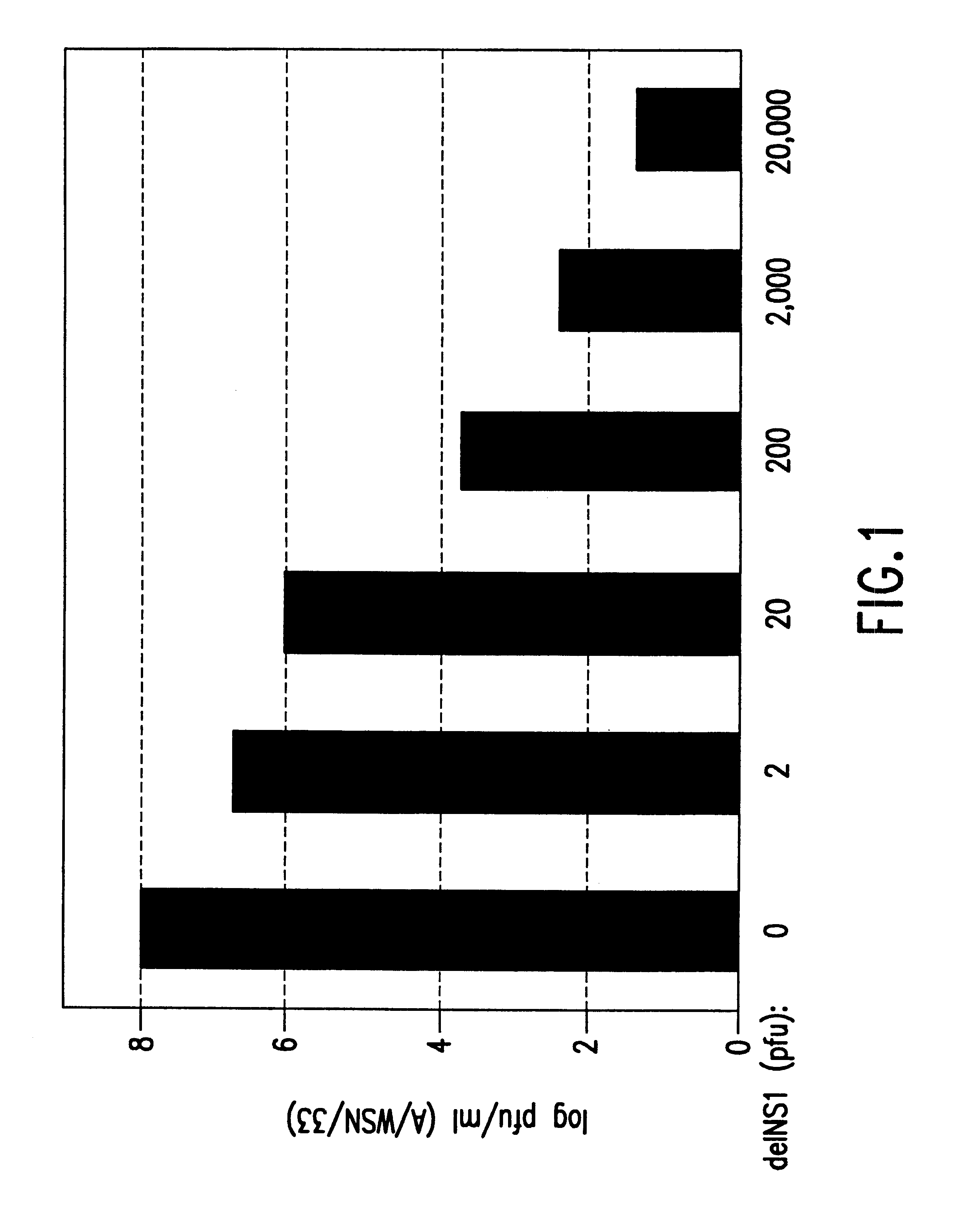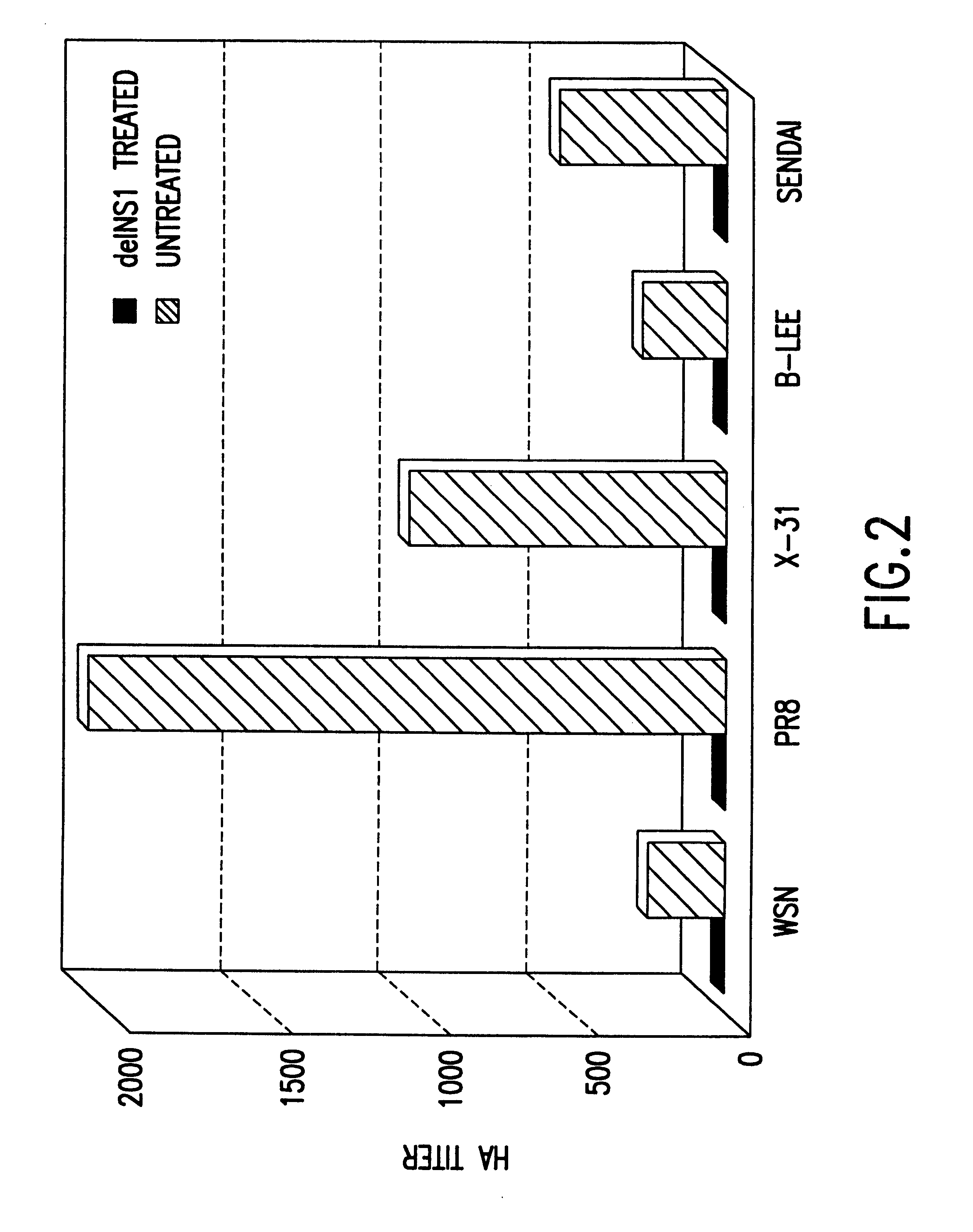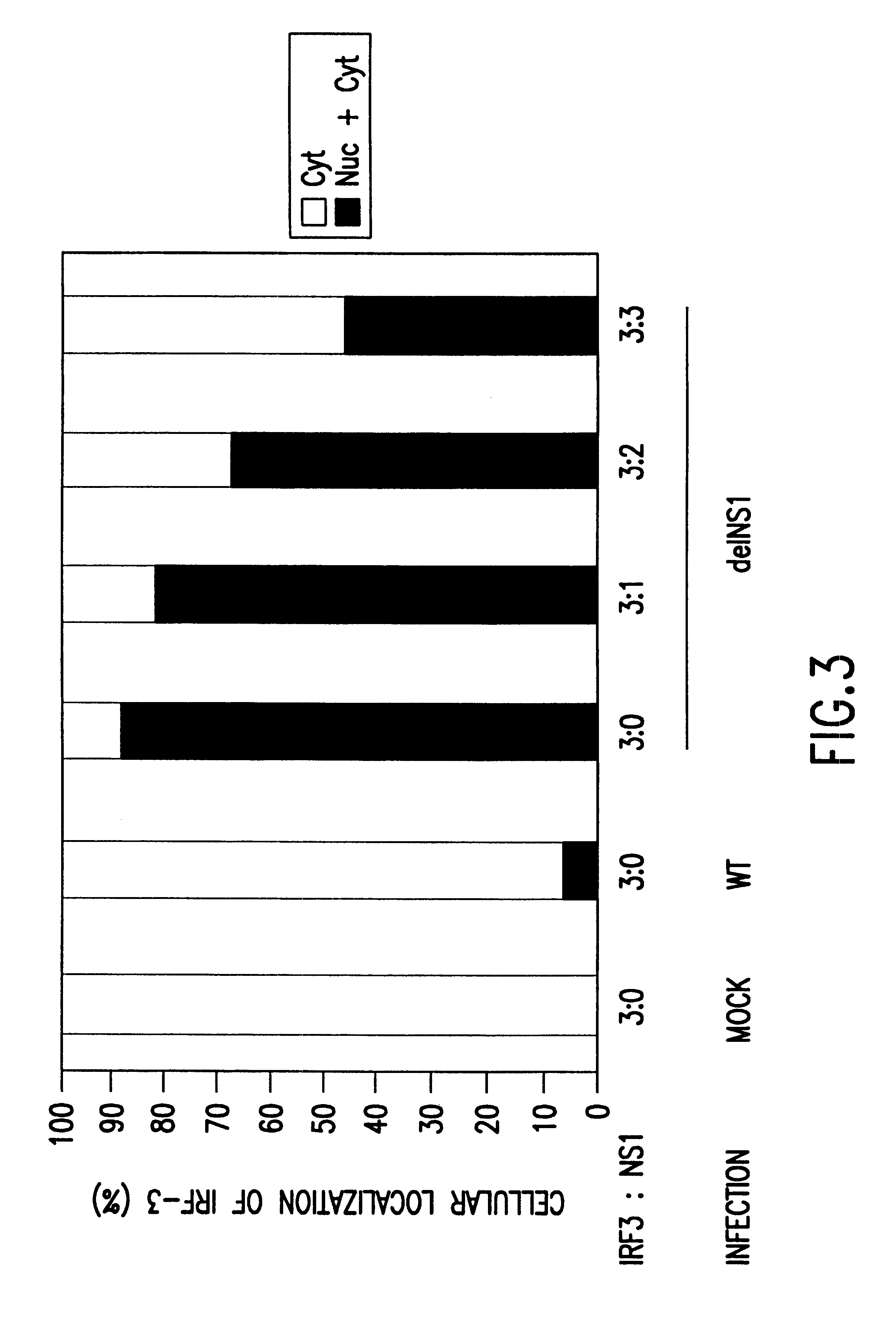The present invention relates to attenuated
negative strand RNA viruses having an impaired ability to antagonize the cellular IFN response, and the use of such viruses in vaccine and pharmaceutical formulations. The
mutant viruses with an impaired IFN
antagonist activity are attenuated--they are infectious, can replicate
in vivo to provide subclinical levels of infection, and are not pathogenic. Therefore, they are ideal candidates for
live virus vaccines. Moreover, the attenuated viruses can induce a robust IFN response which has other biological consequences
in vivo, affording protection against subsequent infectious diseases and / or inducing antitumor responses. Therefore, the attenuated viruses can be used pharmaceutically, for the prevention or treatment of other infectious diseases,
cancer in high risk individuals, and / or IFN-treatable diseases.
The attenuated viruses, which induce robust IFN responses in hosts, may also be used in pharmaceutical formulations for the prophylaxis or treatment of other viral infections, or IFN-treatable diseases, such as
cancer. In this regard, the
tropism of the attenuated
virus can be altered to target the
virus to a desired
target organ, tissue or cells in vivo or
ex vivo. Using this approach, the IFN response can be induced locally, at the
target site, thus avoiding or minimizing the side effects of systemic IFN treatments. To this end, the attenuated virus can be engineered to express a ligand specific for a
receptor of the
target organ, tissue or cells.
The
mutant influenza viruses with impaired IFN
antagonist activity were shown to replicate in vivo generating titers that are sufficient to induce immunological and
cytokine responses. For example.,
vaccination with attenuated influenza virus reduced viral
titer in animals that were subsequently challenged with wild-type influenza virus. The attenuated influenza viruses also demonstrated antiviral and
antitumor activity. Pre-infection with attenuated influenza virus inhibited replication of other strains of
wild type influenza virus, and other viruses (such as
Sendai virus) superinfected in embryonated eggs.
Inoculation of the attenuated influenza in animals injected with
tumor cells reduced the number of foci formed. Because influenza virus is known to induce a CTL (cytotoxic
T lymphocyte)response, the attenuated virus is a very attractive candidate for
cancer vaccines.
Mutations which diminish but do not abolish the IFN
antagonist activity of the virus are preferred for vaccine formulations--such viruses can be selected for growth in both conventional and non-conventional substrates, and for intermediate
virulence. In particular, the Applicants have demonstrated that an NS1 C-terminal-truncation mutant replicates to high titers in IFN deficient substrates, such as 6 and 7-day-old embryonated chicken eggs, as well as in the allantoic membrane of 10-day-old embryonated chicken eggs, the conventional substrate for influenza virus that does not permit the growth of influenza virus mutants in which the entire NS1
gene is deleted (also referred to herein as "knockout" mutants). However, replication of the NS1-C terminal truncation mutant is diminished in 12-day-old embryonated eggs. This approach allows, for the first time, the generation and identification of live attenuated
negative strand RNA viruses that have altered, but not abolished, IFN antagonist activity, and that are able to grow in substrates suitable for vaccine preparation. This approach also allows for the first time, an efficient selection
identification system for influenza or other viruses which contain mutations that confer altered, but not abolished,
interferon antagonist activity.
 Login to View More
Login to View More 


